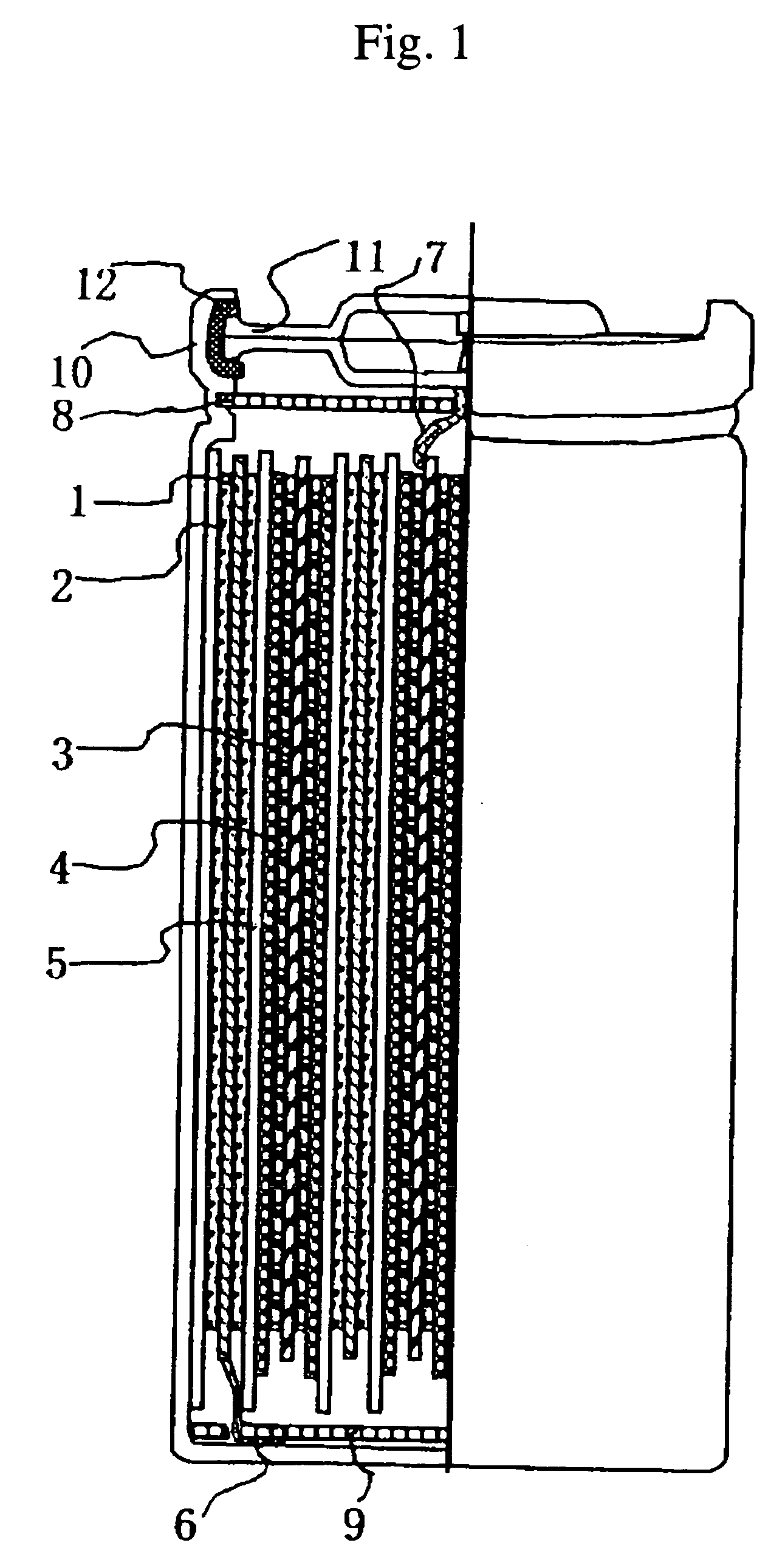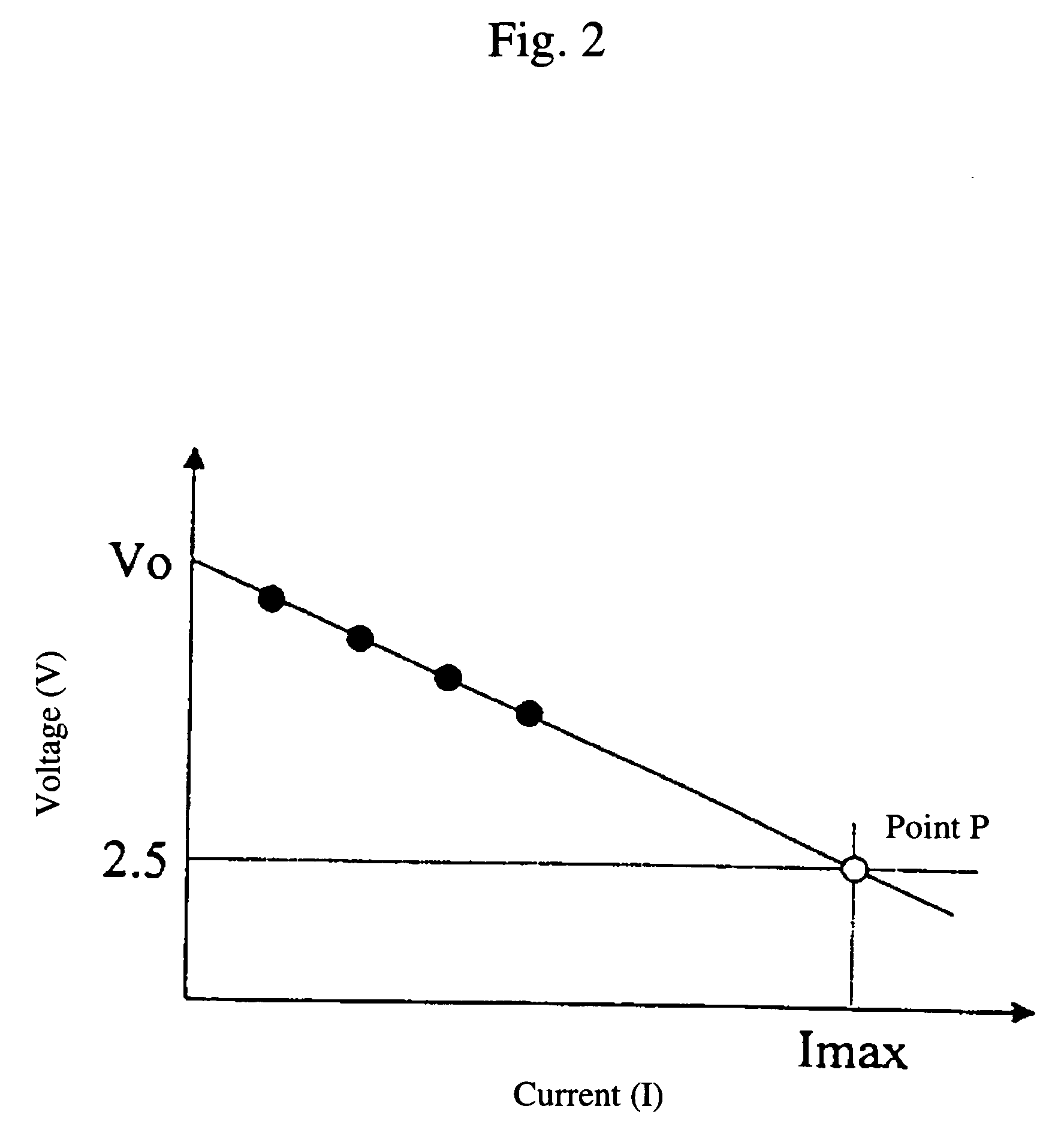Energy storage device, module thereof and electric vehicle using the same
- Summary
- Abstract
- Description
- Claims
- Application Information
AI Technical Summary
Benefits of technology
Problems solved by technology
Method used
Image
Examples
example 1
[0077]FIG. 1 is a partial sectional view of a cylindrical lithium secondary battery as an energy storage device showing an embodiment of the present invention. Positive electrode layers 2 formed as a positive electrode on both sides of a highly conductive current collector 1 were constituted with a region I belonging to a reaction, to occur through charge exchange, occluding / releasing lithium as a compound on the basis of a reaction to occur through charge exchange, and a region II belonging to a charge adsorbing / desorbing reaction to store electricity through adsorption / desorption based on the electric potential of the anion. The positive electrode composed of the current collector 1 and the positive electrode layers 2 was made to face a separator 5 having a large number of pores to hold an electrolytic solution and to allow mobile ions to permeate therethrough, and was further made to face a negative electrode through the intermediary of the separator 5.
[0078] A positive electrod...
example 2
[0090] The positive electrode was prepared as follows: as the active material in the region I where the reaction accompanied by charge exchange occurs in the positive electrode layer 2, LiNi1 / 3Mn1 / 3Co1 / 3O2 was used; as the conducting aid, a 4:1 by weight mixture of a graphite carbon having an average particle size of 3 μm and a specific surface area of 13 m2 / g and a carbon black having an average particle size of 0.04 μm and a specific surface area of 40 m2 / g was used; as a material forming the region II where the charge adsorbing / desorbing reaction occurs, an activated carbon having a relatively higher specific surface area of 2000 m2 / g was used; a positive electrode material paste was prepared with NMP as the solvent so as for the ratio between LiNi1 / 3Mn1 / 3Co1 / 3O2, the conducting aid, the activated carbon and the binder PVDF to be 77:5:10:8 in the solid content ratio by weight; and the both sides of a current collector 1 were coated with the paste, dried and pressed to prepare the...
example 3
[0091] The energy storage device of Example 3 was fabricated with the same electrode configuration as in Example 1 and with an electrolytic solution prepared by dissolving LiPF6 in a concentration of 1 M in a 3:3:1 by volume solvent mixture of EC, EMC and methyl acetate (MA) and by adding VC in a content of 2 wt %. The discharge capacity was 225 mAh, and the output power at −30° C. and at 3.65 V was 4.97 W, to be higher even by 26% than in Comparative Example 1.
EXAMPE 4
[0092] The energy storage device of Example 4 was fabricated with the same electrode configuration as in Example 1 and with an electrolytic solution prepared by dissolving LiPF6 in a concentration of 1 M in a 3:3:1 by volume solvent mixture of EC, EMC and methyl acetate (MA) and by adding VC in a content of 2 wt % and by further adding LiB[OCOCF3]4 in a content of 0.2 wt %. The discharge capacity was 222 mAh, and the output power at −30° C. and at 3.65 V was 5.15 W, to be higher even by 31% than in Comparative Examp...
PUM
 Login to View More
Login to View More Abstract
Description
Claims
Application Information
 Login to View More
Login to View More - R&D
- Intellectual Property
- Life Sciences
- Materials
- Tech Scout
- Unparalleled Data Quality
- Higher Quality Content
- 60% Fewer Hallucinations
Browse by: Latest US Patents, China's latest patents, Technical Efficacy Thesaurus, Application Domain, Technology Topic, Popular Technical Reports.
© 2025 PatSnap. All rights reserved.Legal|Privacy policy|Modern Slavery Act Transparency Statement|Sitemap|About US| Contact US: help@patsnap.com



